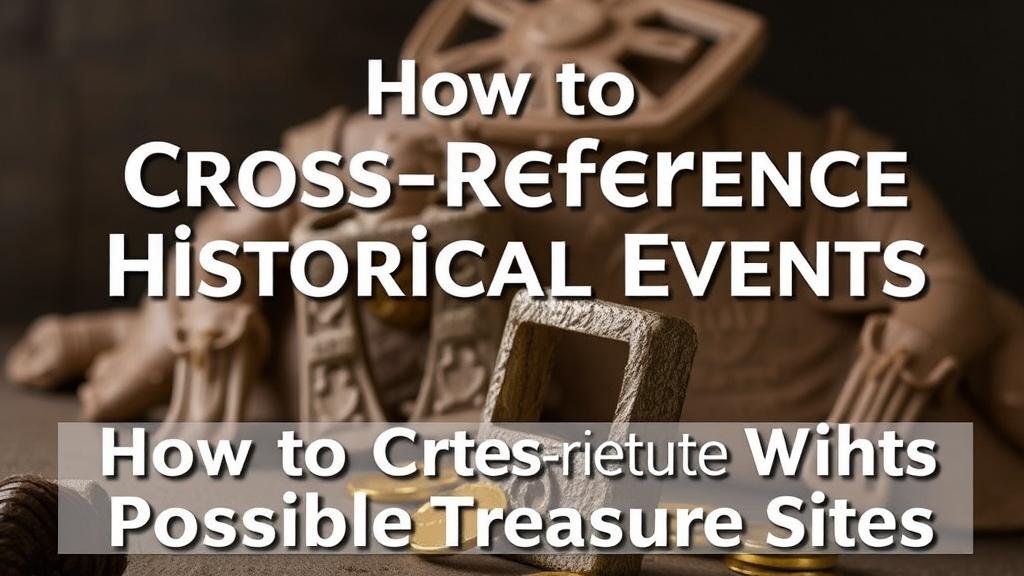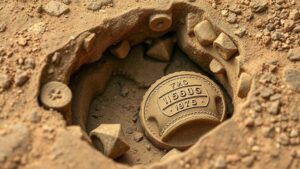How to Cross-Reference Historical Events With Possible Treasure Sites
How to Cross-Reference Historical Events With Possible Treasure Sites
The allure of treasure hunting captivates many, driven by both historical curiosity and the quest for wealth. Understanding how to cross-reference historical events with potential treasure sites enhances one’s chances of discovering hidden riches. This article outlines a systematic approach to such cross-referencing, integrating historical analysis, archaeological methodology, and modern technology.
The Importance of Historical Context
Before embarking on a treasure hunt, it is essential to grasp the historical context surrounding a potential site. Understanding the timeline of significant events can reveal patterns that suggest where treasures may be buried.
For example, consider the infamous Gold Rush of the mid-19th century in the United States. During this period, vast quantities of gold were extracted, but not all finds were documented. Many prospectors who struck gold often faced dire circumstances, leading them to cache their newfound wealth in remote locations. Scholars estimate that approximately $2 billion worth of gold remains unaccounted for from this era. So, locations associated with historical mining expeditions could be prime targets for treasure hunting.
Researching Historical Events
To effectively cross-reference historical events with treasure locations, one must conduct thorough research. This involves:
- Examining primary documents such as diaries, letters, and newspapers from the period.
- Consulting secondary sources like history books and scholarly articles.
- Utilizing databases and archives that compile historical records.
For example, the tales surrounding the pirate Captain Kidd in the late 17th century have fueled countless treasure hunts. Historical accounts indicate that Kidd buried treasures in various locations, particularly in the Caribbean. By scrutinizing logs, accounts, and maritime records from that era, treasure hunters can identify plausible sites for excavation.
Utilizing Geological and Archaeological Data
Pairing historical research with geological and archaeological data is crucial in identifying potential treasure sites. Geoarchaeological surveys and environmental analysis often help to determine where human activity was concentrated during historical events.
A notable case is the wreck of the Spanish galleon, Nuestra Señora de Atocha, which sank off the Florida Keys in 1622. ship was laden with gold, silver, and emeralds. By applying underwater archaeological techniques, coupled with historical shipping routes, researchers identified the wreck site, leading to the recovery of treasures worth over $450 million. This emphasizes the importance of integrating geological studies with historical texts.
Modern Technology: GIS and Remote Sensing
In recent years, advancements in technology, such as Geographic Information Systems (GIS) and remote sensing, have revolutionized treasure hunting. e tools allow researchers to create detailed maps that layer historical events over current geographic data.
For example, GIS can be employed to visualize historical trade routes against contemporary landscapes. By examining the locations of shipwrecks and known treasure sites, treasure seekers can identify high-probability areas. Also, drone technology enables aerial photography and site surveying, revealing terrain features obscured by vegetation or debris.
Case Studies of Successful Cross-Referencing
Examining real-world examples can elucidate successful methodologies for cross-referencing historical events with treasure hunting sites:
- The Oak Island Mystery: This site in Nova Scotia, Canada, has long been rumored to hold buried pirate treasure. Historical records of shipwrecks and the surrounding lore have sparked numerous excavations and explorations, illustrating the importance of intertwining diverse historical narratives.
- Spanish Conquistadors in South America: Explorers like Francisco Pizarro amassed wealth, leading to treasure being buried or hidden within the structures of ancient civilizations. Archaeological excavations in known colonial sites have yielded riches and provided insight into historical events, combining treasures with cultural heritage.
Actionable Takeaways
To successfully cross-reference historical events with possible treasure sites, consider the following actionable steps:
- Develop a timeline of relevant historical events that may link to treasure discoveries.
- Enhance research through a variety of primary and secondary sources.
- Use geological and archaeological methods to build a foundation based on empirical data.
- Incorporate modern technology for data mapping and site surveying.
- Cultivate an understanding of historical narratives that may reveal hidden pathways to treasures.
By employing this comprehensive approach, treasure hunters can improve their chances of uncovering hidden wealth while enriching their understanding of the history that surrounds these pursuits.



